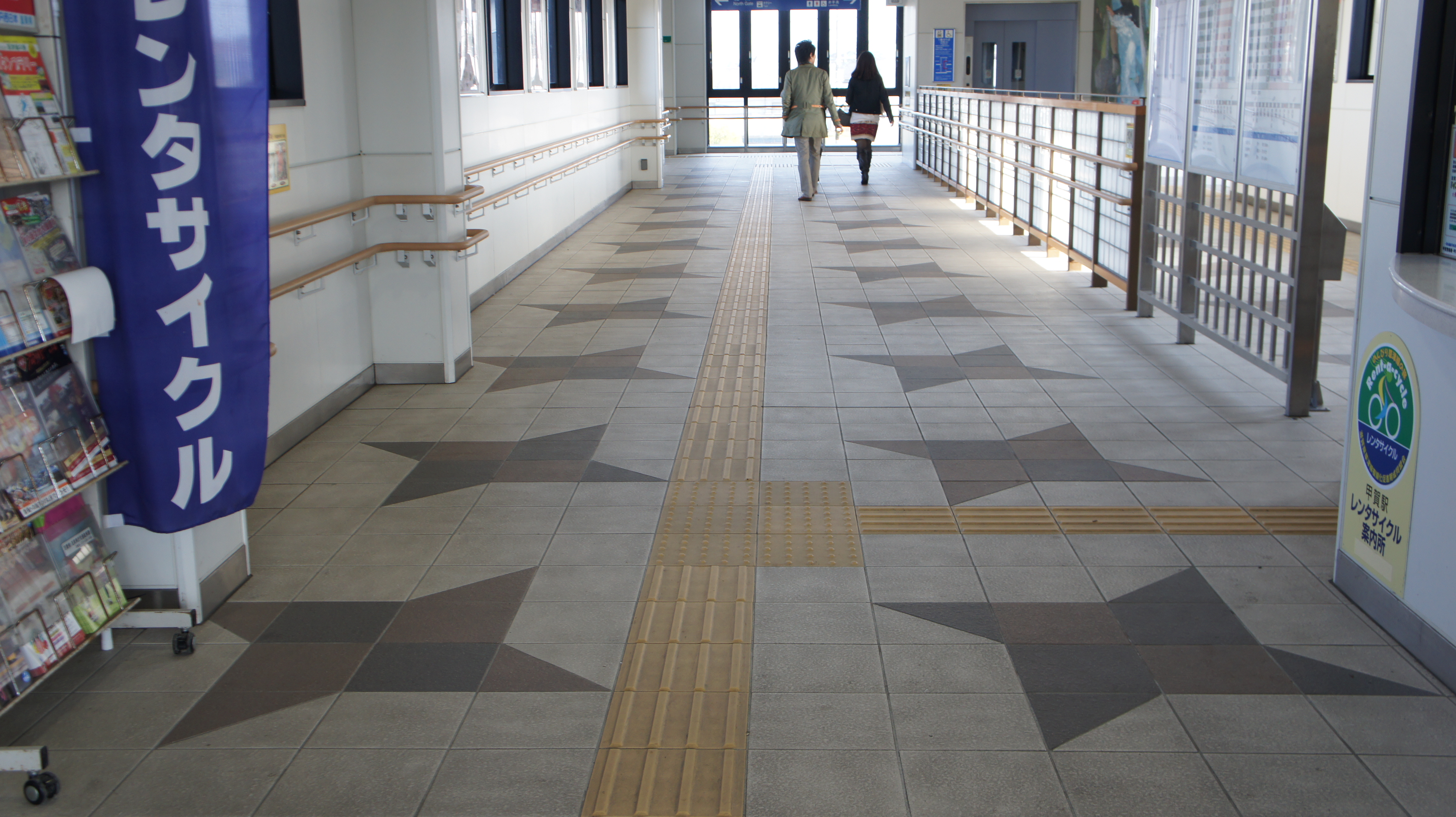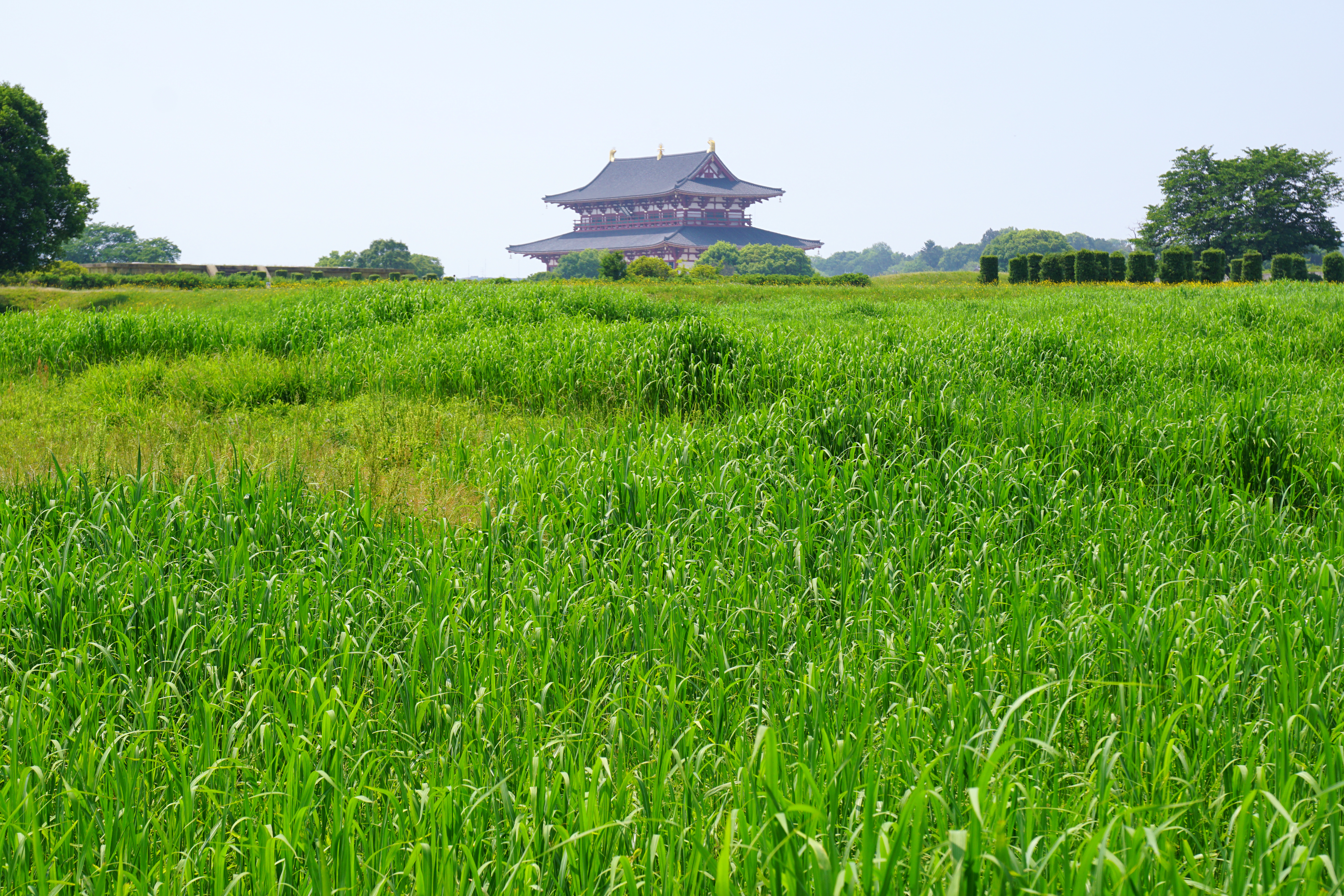|
Shigaraki Palace
The was an imperial palace built by Emperor Shōmu, initially as a villa, later named by himself as the capital of Japan in 744 AD. It was located in Kōka District of Ōmi Province in what is now part of the city of Kōka, Shiga Prefecture, Japan. The capital-palace is also referred to as in the ''Shoku Nihongi''. Its ruins were designated a National Historic Site of Japan in 1974. Overview After the rebellion of Fujiwara no Hirotsugu in 740, Emperor Shōmu relocated his seat to (currently part of Kizugawa, Kyoto) and also built a detached villa deep in the mountains of southern Ōmi, which was called "Rakumura". He often visited this villa and in 742 decided to make it his primary residence. There are various theories as to why Emperor Shōmu chose to relocate to such an inconvenient location deep in the mountains. The Kuni area was a power base for Tachibana no Moroe, who was then the minister with de facto power over the " dajō-kan" council. The preference of Shigaraki po ... [...More Info...] [...Related Items...] OR: [Wikipedia] [Google] [Baidu] |
Kōka, Shiga
280px, Kōka "ninja house" 280px, Shigaraki ware ceramics is a city in southern Shiga Prefecture, Japan. (The word 'Kōka' is often rendered as 'Koga' in English, especially when referring to the "Koga Ninja".) , the city had an estimated population of 89,619 in 36708 households and a population density of 190 persons per km². The total area of the city is . Geography Kōka occupies the entire southern end of Shiga Prefecture, and is thus long east-to-west. At the eastern end of Kōka, the southern ridge of the Suzuka Mountains with one elevation of 1000 meters runs from northeast to southwest, forming the boundary with Mie Prefecture. The highest altitude point in Kōka is Mount Amagoi in this range. Neighboring municipalities Shiga Prefecture *Ōtsu * Rittō * Konan *Higashiōmi *Ryūō * Hino Kyoto Prefecture *Wazuka * Minamiyamashiro *Ujitawara Mie Prefecture *Yokkaichi * Suzuka * Kameyama * Iga *Komono Climate Kōka has a Humid subtropical climate (Köppen ''Cfa'') ... [...More Info...] [...Related Items...] OR: [Wikipedia] [Google] [Baidu] |
Rōben
(689 – 773), also known as Ryōben, was a Japanese Buddhist monk of the Kegon sect, and clerical founder of the Tōdai-ji temple in Nara, Nara Prefecture, Japan. He is popularly known as the . His life spanned the late Asuka period (538 – 710) to the early Nara period (710 – 794), a period associated with the establishment of Buddhism in Japan. Early life According to tradition, Rōben was born either in either Ōmi Province in present-day Shiga Prefecture or Sagami Province in present-day Kanagawa Prefecture. Sagami is considered the more likely location. According to legend as a young baby, Rōben was snatched by an eagle and dropped off over a pine tree in front of what is now the Nigatsu-dō Hall. Rōben was raised as a monk, and reunited with his mother 30 years later. In one version of the story, Rōben wore an amulet of Kannon Bodhisattva since he was a baby, which his mother recognized when she came to Nara as a pilgrim. Records with the Ministry of ... [...More Info...] [...Related Items...] OR: [Wikipedia] [Google] [Baidu] |
Archaeological Sites In Japan
Archaeology or archeology is the scientific study of human activity through the recovery and analysis of material culture. The archaeological record consists of artifacts, architecture, biofacts or ecofacts, sites, and cultural landscapes. Archaeology can be considered both a social science and a branch of the humanities. It is usually considered an independent academic discipline, but may also be classified as part of anthropology (in North America – the four-field approach), history or geography. Archaeologists study human prehistory and history, from the development of the first stone tools at Lomekwi in East Africa 3.3 million years ago up until recent decades. Archaeology is distinct from palaeontology, which is the study of fossil remains. Archaeology is particularly important for learning about prehistoric societies, for which, by definition, there are no written records. Prehistory includes over 99% of the human past, from the Paleolithic until the advent ... [...More Info...] [...Related Items...] OR: [Wikipedia] [Google] [Baidu] |
History Of Shiga Prefecture
History (derived ) is the systematic study and the documentation of the human activity. The time period of event before the invention of writing systems is considered prehistory. "History" is an umbrella term comprising past events as well as the memory, discovery, collection, organization, presentation, and interpretation of these events. Historians seek knowledge of the past using historical sources such as written documents, oral accounts, art and material artifacts, and ecological markers. History is not complete and still has debatable mysteries. History is also an academic discipline which uses narrative to describe, examine, question, and analyze past events, and investigate their patterns of cause and effect. Historians often debate which narrative best explains an event, as well as the significance of different causes and effects. Historians also debate the nature of history as an end in itself, as well as its usefulness to give perspective on the problems of the p ... [...More Info...] [...Related Items...] OR: [Wikipedia] [Google] [Baidu] |
Former Capitals Of Japan
A former is an object, such as a template, gauge or cutting die, which is used to form something such as a boat's hull. Typically, a former gives shape to a structure that may have complex curvature. A former may become an integral part of the finished structure, as in an aircraft fuselage, or it may be removable, being using in the construction process and then discarded or re-used. Aircraft formers Formers are used in the construction of aircraft fuselage, of which a typical fuselage has a series from the nose to the empennage, typically perpendicular to the longitudinal axis of the aircraft. The primary purpose of formers is to establish the shape of the fuselage and reduce the column length of stringers to prevent instability. Formers are typically attached to longerons, which support the skin of the aircraft. The "former-and-longeron" technique (also called stations and stringers) was adopted from boat construction, and was typical of light aircraft built until the ad ... [...More Info...] [...Related Items...] OR: [Wikipedia] [Google] [Baidu] |
Naniwa-kyō
is a historical Japanese capital city, which was located in present-day central Osaka city is a designated city in the Kansai region of Honshu in Japan. It is the capital of and most populous city in Osaka Prefecture, and the third most populous city in Japan, following Special wards of Tokyo and Yokohama. With a population of 2.7 .... Traces of ancient palacesPalaces from two different times between 7 to 8th centuries were found through excavations. in Naniwa were found in 1957. Through more recent excavations, the existence of a city was confirmed, at least for the latter period in the 8th century. References External links Osaka City Cultural Properties Association (Japanese) Former capitals of Japan Nara period {{Japan-hist-stub ... [...More Info...] [...Related Items...] OR: [Wikipedia] [Google] [Baidu] |
List Of Historic Sites Of Japan (Shiga)
This list is of the Historic Sites of Japan located within the Prefecture of Shiga. National Historic Sites As of 1 January 2021, fifty Sites have been designated as being of national significance (including two *Special Historic Sites); Genbao Castle Site spans the prefectural borders with Fukui. Prefectural Historic Sites As of 1 May 2020, forty-four Sites have been designated as being of prefectural importance. Municipal Historic Sites As of 1 May 2020, a further eighty-seven Sites have been designated as being of municipal importance. See also * Cultural Properties of Japan * Ōmi Province * List of Places of Scenic Beauty of Japan (Shiga) This list is of the Places of Scenic Beauty of Japan located within the Prefecture of Shiga. National Places of Scenic Beauty As of 1 July 2021, twenty-two Places have been designated at a national level. Prefectural Places of Scenic Bea ... * List of Cultural P ... [...More Info...] [...Related Items...] OR: [Wikipedia] [Google] [Baidu] |
Shigaraki Kogen Railway
is a Japanese third-sector railway company funded by Shiga Prefecture and the city of Koka. The railway operates the Shigaraki Line, a former JR West line that was transferred to the third sector in 1987. The Shigaraki Line connects Kibukawa on the JR West Kusatsu Line with Shigaraki. Route data *Operating Company: **Shigaraki Kohgen Railway Co. *Distance: **Kibukawa — Shigaraki: 14.7 km *Gauge: *Stations: 6 *Double-track: None *Electrification: Not electrified Stations Rolling stock * SKR310 series (since 2001) * SKR400 series (since 2015) * SKR500 series (since 5 February 2017) , the company operates a fleet of four diesel railcars: SKR310 series cars SKR311 and SKR312, SKR400 series car SKR401, and SKR500 series car SKR501. The two SKR310 series diesel railcars were introduced in 2001, based on the earlier SKR300 series design but with more powerful engines. SKR400 series diesel railcar SKR401 was delivered to the line in September 2015. This replaced car ... [...More Info...] [...Related Items...] OR: [Wikipedia] [Google] [Baidu] |
Nara Daibutsu
The National Archives and Records Administration (NARA) is an " independent federal agency of the United States government within the executive branch", charged with the preservation and documentation of government and historical records. It is also tasked with increasing public access to those documents which make up the National Archive. NARA is officially responsible for maintaining and publishing the legally authentic and authoritative copies of acts of Congress, presidential directives, and federal regulations. NARA also transmits votes of the Electoral College to Congress. It also examines Electoral College and Constitutional amendment ratification documents for prima facie legal sufficiency and an authenticating signature. The National Archives, and its publicly exhibited Charters of Freedom, which include the original United States Declaration of Independence, United States Constitution, United States Bill of Rights, and many other historical documents, is headquarter ... [...More Info...] [...Related Items...] OR: [Wikipedia] [Google] [Baidu] |
Heijō-kyō
was the Capital of Japan during most of the Nara period, from 710 to 740 and again from 745 to 784. The imperial palace is a listed UNESCO World Heritage together with other places in the city of Nara (cf. Historic Monuments of Ancient Nara). Empress Genmei ordered the Imperial capital moved from Fujiwara-kyō to Heijō-kyō in 708, and the move to Heijō-kyō was complete in 710. Heijō-kyō was modeled after Chang'an, the capital of Tang-dynasty China, although Heijō-kyō lacked walls. In the city, merchants and traders from China, Korea and India introduced various foreign cultures to Heijō-kyō through the Silk Road. As a result, Heijō-kyō flourished as Japan's first international and political capital, with a peak population of between 50,000 and 100,000. The overall form of the city was an irregular rectangle, and the area of city is more than 25 km2. Architecture In the area of Heijō-kyō, there are ancient Buddhist temples, and some temples are also l ... [...More Info...] [...Related Items...] OR: [Wikipedia] [Google] [Baidu] |
Tang Dynasty
The Tang dynasty (, ; zh, t= ), or Tang Empire, was an Dynasties in Chinese history, imperial dynasty of China that ruled from 618 to 907 AD, with an Zhou dynasty (690–705), interregnum between 690 and 705. It was preceded by the Sui dynasty and followed by the Five Dynasties and Ten Kingdoms period. Historians generally regard the Tang as a high point in Chinese civilization, and a Golden age (metaphor), golden age of cosmopolitan culture. Tang territory, acquired through the military campaigns of its early rulers, rivaled that of the Han dynasty. The House of Li, Lǐ family () founded the dynasty, seizing power during the decline and collapse of the Sui Empire and inaugurating a period of progress and stability in the first half of the dynasty's rule. The dynasty was formally interrupted during 690–705 when Empress Wu Zetian seized the throne, proclaiming the Zhou dynasty (690–705), Wu Zhou dynasty and becoming the only legitimate Chinese empress regnant. The devast ... [...More Info...] [...Related Items...] OR: [Wikipedia] [Google] [Baidu] |


.jpg)
.jpg)




